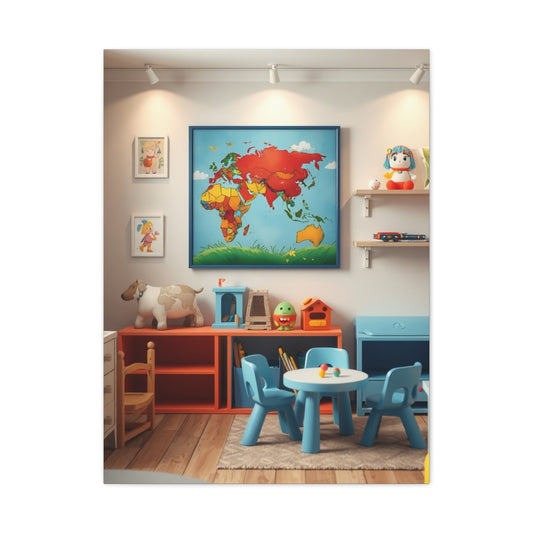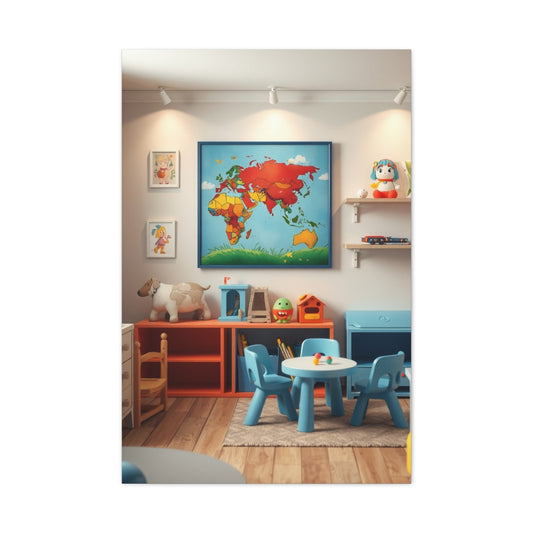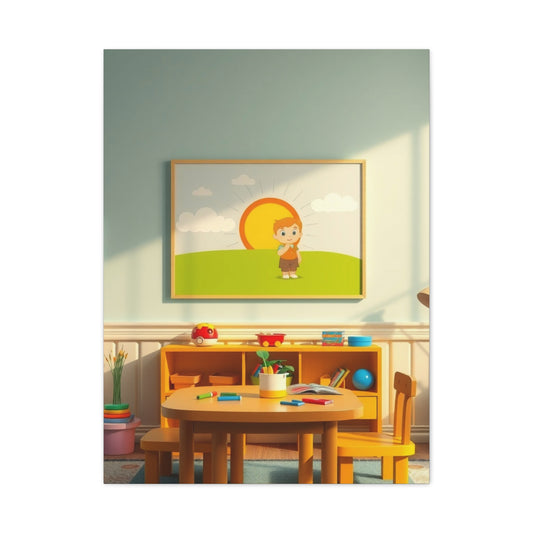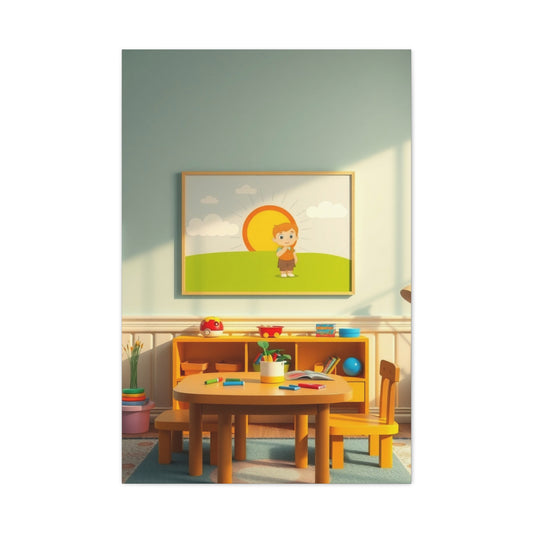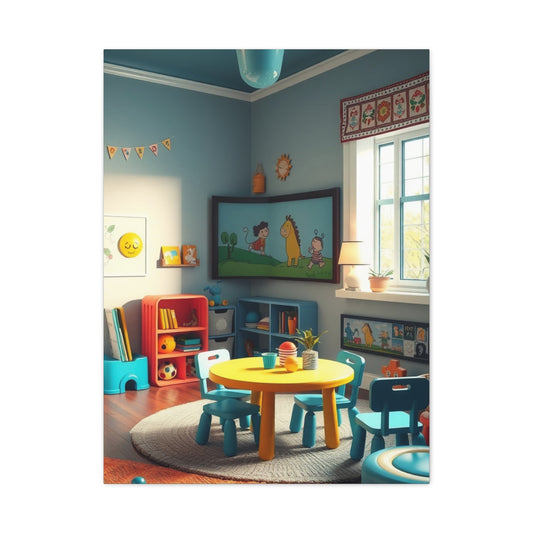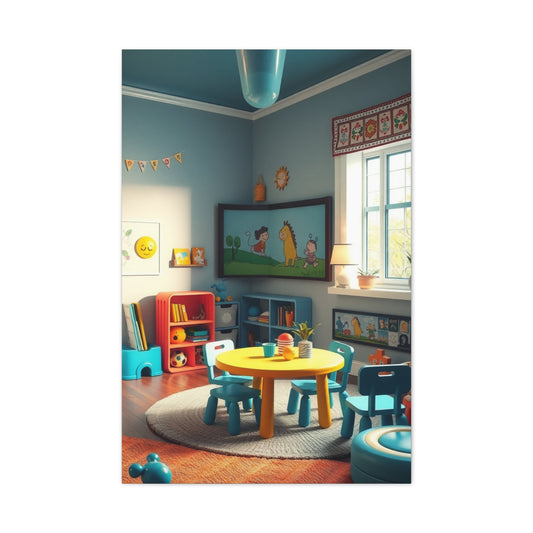A bedroom is more than just a space for rest; it is a sanctuary that reflects your personal style and offers comfort after a long day. Thoughtful bedroom design combines aesthetics, functionality, and harmony, ensuring that every element complements the overall ambiance. One of the key pieces that can transform the essence of a bedroom is the dressing table. While often overlooked, a well-designed white dressing table can serve as a focal point, bringing elegance, sophistication, and a sense of calm to the room. Its versatility allows it to adapt to various interior styles, from modern minimalism to classic vintage allure, making it an indispensable element in bedroom design.
Importance of a Well-Designed Bedroom
The design of a bedroom directly impacts mood, relaxation, and even productivity. A room that is organized, aesthetically pleasing, and thoughtfully furnished encourages restful sleep and promotes a positive mental state. Choosing the right furniture, color palette, and décor pieces is essential to create a balanced environment. White furniture, particularly a white dressing table, plays a vital role in maintaining a serene and luminous atmosphere. The neutral tone of white effortlessly reflects light, making spaces appear more expansive, fresh, and inviting. A white dressing table can integrate seamlessly into various bedroom themes, whether the intent is a tranquil retreat, a contemporary haven, or a space that exudes timeless elegance.
Bedroom Design Ideas for Small Spaces
Maximizing functionality without sacrificing style is crucial in small bedrooms. Compact furniture pieces like a sleek white dressing table with an integrated stool can significantly enhance the utility of limited space. A minimalistic design approach works exceptionally well, emphasizing clean lines, practical storage, and a clutter-free environment. Adding a mirror to a small white dressing table not only serves a practical purpose but also creates the illusion of a larger room by reflecting light and enhancing spatial perception. Incorporating multi-functional elements such as drawers, shelves, and hidden compartments allows the dressing area to remain organized and accessible, even in confined quarters. The combination of white furniture and clever storage solutions ensures the bedroom remains visually open while maintaining elegance and practicality.
Modern Bedroom Design Trends
Modern bedroom design emphasizes simplicity, comfort, and an elegant balance of form and function. Contemporary aesthetics often integrate neutral tones, sleek furniture, and reflective surfaces to create a sense of spaciousness and sophistication. White dressing tables have become a cornerstone of these trends due to their adaptability and timeless appeal. Modern designs frequently feature clean, linear silhouettes, light-reflecting surfaces, and subtle accents that harmonize with the room’s overall theme. Integrating a large, illuminated mirror into a white dressing table setup enhances both practicality and glamour, ensuring a well-lit space ideal for daily routines. Potted plants, minimalist décor items, and ergonomic stools complement the modern design ethos, providing a natural, refreshing touch while keeping the environment functional and stylish.
Classic White Dressing Table for Elegant Corners
A white dressing table with classic design elements can create a sophisticated and charming corner in any bedroom. Featuring ornate detailing, gentle curves, and an elegantly carved mirror, these tables evoke a sense of timeless grace. Soft white finishes combined with subtle embellishments make the space inviting and cozy. Styling such a dressing table with sheer fabrics draped over its edges, delicate floral arrangements, and a collection of candles enhances the romantic and tranquil ambiance. Pairing the table with a muted grey tufted chair completes the look, providing a comfortable seating area for grooming or leisurely routines. The combination of vintage detailing and soft hues ensures the dressing area becomes a captivating feature within the bedroom, seamlessly blending aesthetics with function.
Minimalistic White Dressing Table for Compact Bedrooms
In small or contemporary bedrooms, minimalistic white dressing tables are a practical and stylish choice. These tables often feature streamlined surfaces, uncluttered designs, and hidden storage options that help maintain an organized environment. A matching stool that tucks neatly underneath enhances functionality while saving space. Pairing the table with a large standing mirror, ideally with built-in lighting, amplifies the room’s brightness and creates an airy feel. Minimalistic décor items such as a few potted plants or sleek containers maintain the clean look without overwhelming the space. By embracing simplicity, this design approach allows small bedrooms to feel open, functional, and aesthetically pleasing, while ensuring the white dressing table stands out as a central feature.
Glamorous Vanity White Dressing Table with Lighting
For those who value a luxurious bedroom setup, a white vanity table with integrated lighting and ample surface area is a standout choice. These tables provide space for all beauty essentials while offering a mirror framed with soft lighting for precise grooming. The inclusion of adjacent storage, such as a built-in wardrobe or drawers, ensures that functionality complements style. Incorporating natural wood accents or earthy tones in nearby furniture adds warmth, preventing the white elements from appearing sterile. The combination of sleek white surfaces, well-placed lighting, and practical storage transforms the dressing table into a sophisticated hub that enhances both the visual appeal and usability of the bedroom.
Contemporary White Dressing Table for Modern Interiors
Contemporary bedroom designs often feature a subtle palette of greys, whites, and muted tones, where a white dressing table can act as a visual highlight. Reflective surfaces on the table mirror light, creating a brighter and more expansive feel. Pairing the table with a matching stool and minimalist décor items ensures that the dressing area remains practical yet stylish. Clean lines and understated detailing make the table adaptable to a wide variety of bedroom aesthetics, from ultramodern spaces to transitional interiors. By balancing simplicity and elegance, contemporary white dressing tables provide both functional benefits and a focal point that elevates the overall design of the bedroom.
Ergonomic White Wooden Dressing Table Stool
A well-designed white wooden stool can enhance the comfort and usability of any dressing table setup. Ergonomic considerations, such as proper seating height and supportive structure, ensure that the stool provides comfort during daily routines without compromising on style. Smooth finishes and clean lines allow the stool to blend seamlessly with various dressing table designs, from modern minimalism to classic elegance. The versatility of a simple white wooden stool makes it a practical accessory, complementing the dressing table while maintaining the bedroom’s aesthetic harmony. Its presence allows for a balanced combination of comfort, utility, and refined design.
Integrating Décor Accessories with White Dressing Tables
The visual appeal of a white dressing table can be elevated through thoughtful integration of décor accessories. Items such as decorative trays, scented candles, small potted plants, and elegant jewelry organizers not only enhance functionality but also contribute to the overall aesthetic of the bedroom. Mirrors with ornate frames or integrated lighting can create an illusion of depth and add a touch of luxury. Coordinating accessories with the room’s color palette and textures ensures that the dressing table seamlessly blends into the broader bedroom design. By carefully selecting and arranging these elements, the dressing table becomes a personalized feature that reflects individual taste and style while maintaining a cohesive design language.
Customization and Personalization in Dressing Table Designs
Modern bedroom design encourages customization, allowing homeowners to tailor their white dressing tables to suit individual preferences and spatial requirements. Adjustable mirrors, modular storage units, and customizable lighting options provide flexibility while enhancing functionality. Incorporating personal touches such as framed photographs, artistic décor pieces, or heirloom ornaments transforms the table into a unique centerpiece. Personalized dressing tables not only serve practical needs but also imbue the bedroom with character and charm. These design decisions highlight the balance between aesthetic appeal and everyday usability, ensuring that the white dressing table remains a functional and visually engaging element in the room.
Maximizing Light and Space with White Dressing Tables
White furniture, including dressing tables, has the unique ability to maximize both natural and artificial light within a room. Reflective surfaces, mirrors, and light-colored finishes create an illusion of more space and openness, which is particularly beneficial in smaller bedrooms. Positioning a white dressing table near a window or pairing it with strategically placed lighting can enhance brightness and make the room feel larger than it is. The interplay of light with the clean lines and smooth surfaces of a white dressing table creates a visually uplifting environment, contributing to a serene and airy bedroom atmosphere.
White Dressing Tables in Thematic Bedroom Designs
The adaptability of white dressing tables allows them to fit effortlessly into various thematic bedroom designs. In vintage-inspired rooms, ornate detailing, delicate curves, and soft embellishments complement a nostalgic aesthetic. Minimalist and modern bedrooms benefit from clean lines, sleek surfaces, and functional storage solutions. Even eclectic or bohemian bedrooms can incorporate white dressing tables as neutral anchors, allowing bold patterns, textures, and colors to flourish without overwhelming the space. This versatility ensures that regardless of the chosen bedroom theme, a white dressing table can serve as a harmonious and stylish addition.
Combining Functionality with Style in White Dressing Tables
The best bedroom designs strike a balance between functionality and visual appeal, and white dressing tables exemplify this principle. Adequate surface area, integrated storage, and ergonomic seating enhance daily usability, while thoughtful styling elements elevate the table’s aesthetic value. By pairing functional design with artistic accents, homeowners can create a dressing area that is both practical and visually captivating. Whether for everyday grooming, makeup routines, or simply as a decorative feature, a white dressing table can fulfill multiple roles, demonstrating that beauty and practicality need not be mutually exclusive.
Seasonal and Occasional Styling Tips
Adapting the styling of a white dressing table according to seasons or special occasions can refresh the bedroom’s ambiance without major renovations. Incorporating seasonal floral arrangements, scented candles, or color-coordinated décor items allows the space to evolve throughout the year. For festive or celebratory events, subtle decorative accents like gold or silver trays, themed ornaments, or accent lighting can instantly transform the dressing area. These small yet impactful styling choices maintain the elegance of the white dressing table while infusing the bedroom with vibrancy and a sense of timeliness.
Luxury Bedroom Design Inspirations
Luxury bedroom designs exude sophistication, elegance, and a sense of grandeur. The key to achieving this ambiance lies in selecting furniture pieces that are both functional and opulent, with a white dressing table serving as a central element. Incorporating reflective surfaces, high-quality materials, and intricate detailing elevates the bedroom’s aesthetic. A white vanity with a large, illuminated mirror can act as a focal point, enhancing light and space while providing a glamorous grooming area. Complementing this with plush fabrics such as velvet cushions, silk drapes, or textured rugs amplifies the luxurious feel. Subtle metallic accents in gold, bronze, or silver on drawer handles, mirror frames, or decorative accessories further enrich the environment. Thoughtful lighting, including pendant lights, sconces, or strategically placed lamps, enhances the mood and highlights the elegance of the furniture. By combining these elements, a white dressing table transforms from a simple functional piece into a symbol of refinement, seamlessly integrating with other luxury bedroom components such as upholstered headboards, statement wardrobes, and accent chairs.
Cozy and Minimalist Bedroom Design Tips
Minimalist bedroom designs focus on simplicity, comfort, and tranquility. A white dressing table in such a space can maintain a clean, uncluttered aesthetic while adding practical value. Opting for tables with smooth finishes, streamlined silhouettes, and integrated storage ensures that the room remains organized and visually appealing. Pairing the dressing table with a compact stool or chair enhances comfort without overwhelming the space. Accessories should be subtle and purposeful, such as a single vase with fresh flowers, a small tray for essentials, or a soft lamp to create ambient lighting. Neutral tones, including soft greys, beige, and muted pastels, complement the white furniture, creating a serene atmosphere. In smaller bedrooms, using mirrors strategically on or above the dressing table helps amplify natural light and gives an illusion of expanded space. Minimalist styling encourages intentional decoration, where each element contributes to a harmonious, uncluttered look, making the bedroom feel cozy, airy, and inviting.
Color Schemes for Bedrooms
Selecting the right color palette is fundamental to bedroom design, influencing mood, perception of space, and overall ambiance. White dressing tables integrate effortlessly into various schemes, providing a neutral foundation that complements bold, muted, or pastel tones. For a tranquil and serene setting, pairing the white furniture with soft blues, gentle lavenders, or muted greens creates a calming retreat. Neutral palettes such as creams, greys, and taupes exude understated elegance while maintaining a harmonious balance. For more dramatic interiors, contrasting white furniture with deep hues like navy, emerald, or charcoal adds sophistication and highlights the furniture as a central feature. Accent colors in décor items such as cushions, throws, vases, or artwork can further personalize the space, creating visual interest without overpowering the room. Layering textures alongside colors, like pairing a white table with a velvet stool or a woven rug, enhances depth and tactile appeal, ensuring that the bedroom remains inviting and visually engaging.
Choosing the Right Bedroom Furniture
Selecting bedroom furniture requires balancing aesthetics, comfort, and functionality. A well-chosen white dressing table enhances both the visual appeal and utility of the space, providing storage, grooming convenience, and a decorative focal point. Consider dimensions, style, and material quality to ensure the furniture complements the bedroom layout. Compact tables with drawers or shelves are ideal for maximizing space, while larger tables with integrated mirrors suit more expansive bedrooms. Coordinating the dressing table with other furniture, such as beds, wardrobes, and bedside tables, maintains cohesion and stylistic consistency. Materials like solid wood, MDF, or lacquered finishes ensure durability while offering a polished appearance. Incorporating ergonomic seating with stools or chairs designed for comfort allows practical use without compromising style. Accessories and decorative touches, including lamps, trays, and small organizers, enhance functionality and maintain aesthetic appeal. Thoughtful furniture selection ensures that each piece contributes to a harmonious, comfortable, and visually appealing bedroom environment.
Incorporating Textures in Bedroom Design
Textures play a pivotal role in adding depth, character, and warmth to bedroom interiors. Pairing a smooth white dressing table with textured elements like a plush rug, velvet cushions, or linen curtains creates a balanced visual composition. Wooden flooring or accent panels add an organic touch, contrasting with the sleek surface of the table. Textured wallpapers or wall panels behind the dressing table can act as a subtle backdrop, emphasizing its elegance. Mixing soft fabrics with hard surfaces, such as combining a polished table with a tufted stool or a woven basket, generates tactile interest while maintaining functionality. Incorporating layered textures enhances the sensory experience of the bedroom, making it feel inviting, cozy, and visually dynamic, while highlighting the central furniture pieces in a sophisticated manner.
Functional Storage Solutions for Bedrooms
Efficient storage is crucial in modern bedroom design, helping maintain organization and cleanliness. White dressing tables with integrated drawers, shelves, or hidden compartments provide practical storage for cosmetics, jewelry, and daily essentials. Utilizing organizers, trays, or baskets within drawers ensures that items remain accessible and neatly arranged. Open shelving on or around the dressing table can display decorative items while providing easy access to frequently used objects. Multi-functional furniture pieces, such as tables with detachable mirrors or foldable stools, enhance usability in smaller spaces. Proper storage planning not only maintains visual order but also maximizes floor space, contributing to a clutter-free and harmonious bedroom environment.
Lighting Techniques for White Dressing Tables
Lighting is a fundamental element in bedroom design, influencing both functionality and ambiance. A well-lit white dressing table can serve as a grooming hub while accentuating the room’s style. Integrated mirrors with LED lighting offer a flattering, practical illumination for makeup or hairstyling. Task lighting, such as adjustable lamps or sconces, provides focused light without casting shadows. Soft ambient lighting, achieved through diffused lamps or string lights, adds warmth and coziness to the dressing area. Natural light can also be optimized by placing the table near windows or reflecting it through mirrors, creating a bright, airy atmosphere. Combining layered lighting techniques ensures the white dressing table remains both functional and visually captivating throughout the day.
Styling White Dressing Tables with Mirrors
Mirrors are an essential component in dressing table setups, enhancing functionality while amplifying light and space. Large mirrors create the illusion of expanded interiors, making the bedroom feel more open. Framed mirrors with subtle detailing can complement various design styles, from minimalist to ornate. For luxury settings, mirrors with integrated lighting or beveled edges add sophistication. Smaller, adjustable mirrors offer versatility for precise grooming tasks. Positioning decorative elements around the mirror, such as candles or potted plants, enhances visual interest and creates a balanced composition. By selecting mirrors that harmonize with the table’s design, the dressing area becomes both a functional workspace and a stylistic centerpiece.
Combining Comfort and Style with Bedroom Seating
Comfortable seating is crucial for enhancing the usability of a dressing table. Stools or chairs with ergonomic designs ensure ease of use during grooming routines. Upholstered seats, whether in velvet, linen, or leather, add texture and luxury while maintaining comfort. Compact designs with foldable or tucking capabilities save space in smaller bedrooms. Matching the seating color or material to the white dressing table ensures cohesion and visual harmony. Incorporating small cushions or throws adds a personalized touch, enhancing both comfort and style. Thoughtful seating arrangements transform the dressing area into a functional and aesthetically pleasing component of the bedroom.
Integrating Natural Elements in Bedroom Design
Incorporating natural elements enhances serenity and balance within the bedroom. Greenery, such as small potted plants, succulents, or hanging plants, brings freshness and life to the space while complementing a white dressing table. Wooden accents, whether in flooring, décor, or furniture details, add warmth and contrast to neutral palettes. Natural fabrics like cotton, linen, or wool create tactile variation and reinforce comfort. Using natural elements alongside white furniture fosters a harmonious and rejuvenating atmosphere, bridging elegance with organic simplicity.
Personalized Décor for Functional Elegance
Personal touches elevate the aesthetic and functionality of a bedroom, transforming standard furniture into a reflection of individual style. Curating decorative items such as framed photographs, small sculptures, or artistic vases on the dressing table adds character without clutter. Functional décor, such as elegant trays, jewelry holders, or scented diffusers, maintains order while enhancing sensory appeal. Personalization allows the space to resonate with the occupant, creating a cohesive and inviting environment where the white dressing table serves as both a practical hub and a stylish focal point.
Harmonizing White Dressing Tables with Bedroom Themes
White dressing tables exhibit remarkable versatility, integrating seamlessly with diverse bedroom themes. In vintage-inspired interiors, ornate detailing and delicate curves complement nostalgic aesthetics. Minimalist spaces benefit from clean lines and unobtrusive surfaces, while contemporary rooms thrive with reflective finishes and modern lighting. Even eclectic or bohemian bedrooms can anchor vibrant patterns and textures with a neutral white table. By aligning the dressing table with the overall theme, the furniture becomes an intrinsic part of the design, enhancing both functionality and visual harmony.
Multi-Functional Designs for Modern Lifestyles
Modern lifestyles demand furniture that balances aesthetics with versatility. Multi-functional white dressing tables, featuring adjustable mirrors, expandable surfaces, or detachable components, cater to varying needs. Tables with integrated storage provide practical organization for cosmetics, accessories, and personal items, while maintaining a clean and stylish appearance. Modular designs enable easy reconfiguration, adapting to changing spatial or lifestyle requirements. By embracing multi-functional principles, a white dressing table evolves into a versatile centerpiece, ensuring practical utility while enhancing bedroom aesthetics.
Utilizing Patterns and Accents to Enhance Aesthetics
Incorporating subtle patterns and accents can enhance the visual appeal of a white dressing table without overwhelming the space. Textured wallpaper, patterned rugs, or geometric décor items introduce depth and complexity. Metallic accents in handles, mirror frames, or decorative pieces add sophistication and contrast. Accents in complementary hues, such as soft pastels or deep jewel tones, provide a balanced focal point, drawing attention to the table while maintaining cohesion with the surrounding décor. Strategic use of patterns and accents transforms a simple white dressing table into an artful and harmonious element of the bedroom.
Bedroom Layout and Space Planning
Proper bedroom layout and space planning are fundamental to creating a harmonious and functional environment. A thoughtfully arranged bedroom enhances comfort, ensures smooth movement, and highlights key furniture pieces such as a white dressing table. Positioning the table near natural light sources allows the reflective surfaces to maximize brightness while maintaining a cozy atmosphere. Consider the flow of the room when arranging beds, wardrobes, and side tables, ensuring that each element complements the other without causing visual clutter. In smaller spaces, multifunctional furniture pieces and compact arrangements can preserve functionality while maintaining aesthetic appeal. Strategic placement of seating, rugs, and decorative items around the dressing table and other focal points helps define zones within the room, creating balance and proportion. Using furniture that scales with the size of the bedroom, such as minimalist white tables, low-profile beds, or modular shelving, ensures the room feels spacious, orderly, and visually harmonious.
Lighting Ideas for Bedrooms
Lighting is crucial for both functional and decorative purposes in a bedroom. Layered lighting techniques help create a versatile environment suitable for relaxation, reading, and grooming. A white dressing table with integrated or accent lighting serves as both a practical grooming station and a design highlight. Task lighting, such as adjustable table lamps or wall-mounted sconces, ensures focused illumination, while ambient lighting like diffused ceiling lights or floor lamps creates a soft, welcoming glow. Accent lighting, including LED strips behind mirrors or under furniture edges, can add subtle drama and elegance. Natural light should be optimized through window placement and sheer curtains, which allow sunlight to brighten the space without harsh glare. Thoughtful use of lighting enhances textures, colors, and reflective surfaces in the bedroom, ensuring that furniture pieces like the white dressing table remain both functional and visually prominent throughout the day and evening.
Bedroom Storage Solutions
Efficient storage solutions are essential in maintaining a clutter-free and organized bedroom. Incorporating a white dressing table with built-in drawers, shelves, or hidden compartments provides practical organization while maintaining an elegant aesthetic. Utilizing vertical space through wall-mounted shelves or tall storage units maximizes capacity without compromising floor area. Modular storage options, including stackable boxes or multifunctional furniture, allow customization according to personal needs. Organizers within drawers, such as compartments for cosmetics, accessories, and personal items, keep essentials easily accessible while maintaining visual order. Combining open and closed storage ensures that functional items remain within reach while decorative elements enhance the overall design. Thoughtful storage planning allows the bedroom to remain serene, spacious, and visually appealing, with each piece contributing to the room’s harmony.
Bedroom Decoration and Accessories
Decorative accents play a pivotal role in enhancing the character and ambiance of a bedroom. A white dressing table serves as a versatile base for styling with accessories such as candles, vases, trays, or artistic ornaments. Coordinating decorative items with the room’s color scheme and textures creates visual cohesion while highlighting focal points. Soft furnishings, including cushions, throws, and rugs, add warmth and tactile interest. Wall art, mirrors, and photographs contribute personal expression and aesthetic depth. Subtle accents in metallic finishes or contrasting tones can elevate elegance and sophistication without overwhelming the space. Seasonal or themed decorations provide opportunities to refresh the bedroom’s appearance periodically, maintaining novelty and vibrancy. Integrating functional décor, such as jewelry holders, elegant trays, or storage baskets, combines practicality with beauty, ensuring that the bedroom remains organized, comfortable, and visually captivating.
Optimizing Bedroom Flow and Movement
Ensuring a seamless flow within the bedroom enhances usability and contributes to a sense of tranquility. Furniture placement should allow unobstructed pathways between essential areas, including the bed, dressing table, wardrobe, and seating. Angling the white dressing table strategically not only maximizes space but also enhances natural light reflection and visual appeal. Grouping furniture in functional zones, such as a grooming corner or a reading nook, helps organize the room efficiently. Avoid overcrowding by prioritizing essential pieces and selecting appropriately scaled furniture. Minimalist arrangements in combination with purposeful décor reduce visual noise, allowing the bedroom to feel spacious, balanced, and serene.
Color Coordination and Mood Enhancement
Color coordination influences the psychological atmosphere of a bedroom. White furniture, including dressing tables, serves as a neutral canvas that harmonizes with a wide range of hues. Soft, muted tones like pastel blues, blush pinks, or sage greens evoke calmness and relaxation, while bold colors such as deep navy, emerald, or burgundy introduce drama and sophistication. Accents in metallics or contrasting textures enrich the palette, adding depth and visual interest. Coordinating colors across walls, textiles, and accessories ensures a cohesive and inviting environment. Integrating subtle tonal variations within the room allows the white dressing table to stand out as a central feature while maintaining harmony with other elements.
Textures and Materials in Bedroom Interiors
Incorporating a variety of textures and materials enhances sensory experience and adds dimension to bedroom interiors. Smooth surfaces of a white dressing table can be balanced with soft textiles, plush rugs, or tactile fabrics like velvet, linen, or wool. Wooden flooring or accent panels introduce organic warmth, contrasting with polished furniture. Decorative elements in glass, ceramic, or metal provide visual variety and subtle elegance. Layering textures across furniture, textiles, and accessories generates a sophisticated and inviting environment while preventing monotony. Thoughtful material selection ensures that each element complements the overall bedroom design, creating depth, balance, and a sense of comfort.
Multi-Functional Furniture for Efficient Living
Modern bedroom designs increasingly emphasize multifunctional furniture to optimize space and usability. White dressing tables with modular components, foldable surfaces, or integrated storage serve multiple purposes, adapting to changing needs. Tables with adjustable mirrors, sliding drawers, or detachable compartments enhance versatility and functionality. Combining grooming, storage, and decorative purposes in one cohesive unit maximizes efficiency without compromising style. Ergonomic seating paired with compact or movable tables further supports daily routines, making the bedroom adaptable and comfortable. Multi-functional designs encourage thoughtful space utilization, allowing even small bedrooms to feel open, organized, and visually appealing.
Integrating Greenery and Natural Elements
Introducing natural elements enriches the bedroom environment, promoting relaxation and visual balance. Small potted plants, hanging planters, or succulent arrangements complement the clean aesthetics of a white dressing table while adding freshness and life. Wooden accents, natural fibers, and organic textures enhance warmth and provide contrast against neutral furniture. Incorporating greenery near grooming areas or seating corners encourages a serene and revitalizing atmosphere. Thoughtful placement of natural elements enhances the bedroom’s design, creating a connection between indoor spaces and the tranquility of nature while maintaining elegance and functionality.
Mirror Placement and Reflection Techniques
Mirrors enhance the perception of space, light, and style within bedrooms. Positioning a white dressing table with a mirror in proximity to natural or artificial light amplifies brightness and creates a sense of openness. Decorative mirrors with subtle frames or intricate detailing add sophistication while serving practical grooming purposes. Using mirrored surfaces strategically can highlight textures, reflect décor elements, and visually expand compact spaces. Layering multiple mirrors or combining floor-standing and tabletop options enhances depth and creates dynamic focal points. Effective mirror placement ensures that the dressing table remains both functional and visually striking, integrating seamlessly with the room’s overall design.
Accessorizing for Style and Function
Accessories enhance the functionality and appeal of bedroom furniture, particularly white dressing tables. Elegant trays, vases, candles, and small sculptures add personality while maintaining organization. Jewelry holders, storage boxes, or decorative containers combine practicality with aesthetic interest. Coordinating accessories with the room’s color palette and textures ensures cohesion while emphasizing the table’s prominence. Subtle stylistic touches, such as metallic finishes, glass accents, or natural materials, create layered visual intrigue without overwhelming the space. Thoughtful accessorizing transforms a simple white dressing table into a refined and functional centerpiece that reflects individual taste.
Seasonal and Thematic Decoration
Changing decorations according to seasons or themes allows the bedroom to evolve aesthetically without extensive renovations. Seasonal florals, scented candles, or themed ornaments on a white dressing table refresh the visual appeal and maintain novelty. Subtle shifts in color accents, textures, or decorative items can complement festive occasions or seasonal moods. Rotating accessories and décor items ensures that the bedroom remains vibrant and dynamic throughout the year. The adaptability of a white dressing table as a styling surface enhances its relevance, making it a versatile and engaging focal point in every interior setting.
Coordinating Furniture Styles
Harmonizing furniture styles is essential to creating a cohesive and elegant bedroom. A white dressing table pairs effectively with a range of design aesthetics, including modern minimalism, classic elegance, or eclectic arrangements. Ensuring consistency in materials, finishes, and proportions among beds, wardrobes, and bedside tables promotes visual unity. Complementary seating, mirrors, and décor accessories enhance the overall aesthetic without competing for attention. Cohesive styling allows each furniture piece to contribute meaningfully to the room’s design, while the white dressing table remains a versatile and prominent feature.
Space-Saving Techniques for Compact Bedrooms
Compact bedrooms require strategic use of furniture and layout to maximize utility and comfort. White dressing tables with slim profiles, integrated storage, and tucked-away stools maintain functionality without occupying excessive floor space. Wall-mounted shelves or mirrors further optimize vertical space, while multi-functional elements like tables with adjustable surfaces enhance adaptability. Combining compact furniture with minimalist décor reduces visual clutter and creates a sense of openness. Space-saving techniques ensure that small bedrooms remain practical, visually appealing, and comfortable, with the white dressing table serving as both a functional tool and a design highlight.
Enhancing Bedroom Ambiance with Lighting Accents
Layered lighting, including ambient, task, and accent lighting, creates a balanced and inviting bedroom ambiance. White dressing tables benefit from integrated illumination or nearby adjustable lamps, ensuring functional visibility while enhancing the aesthetic environment. Accent lighting, such as under-table LED strips or spotlighted decorative items, adds subtle drama and sophistication. Harmonizing light temperatures, brightness, and placement emphasizes textures, colors, and focal points throughout the room. Thoughtful lighting choices elevate both comfort and style, making the bedroom a serene, functional, and visually captivating space.
Bedroom Flooring and Wall Design Ideas
The choice of flooring and wall design significantly influences the ambiance and functionality of a bedroom. Flooring sets the foundation for the room, affecting both visual appeal and comfort. Hardwood floors, in soft oak or walnut tones, create warmth and timeless sophistication, complementing white furniture such as dressing tables and beds. Laminated surfaces provide durability and ease of maintenance while maintaining elegance. For a cozy feel, plush carpets or layered rugs introduce softness underfoot, providing both comfort and aesthetic texture. Natural fiber rugs, including jute or sisal, add organic charm while subtly contrasting with smooth furniture surfaces.
Wall design offers an opportunity to create focal points, enhance spatial perception, and complement the bedroom palette. Neutral tones like soft greys, creams, or muted pastels create a calming backdrop that allows furniture and décor to stand out. Accent walls with textured finishes, subtle murals, or patterned wallpapers can introduce depth and visual interest without overwhelming the space. Combining paint and wall panels with reflective surfaces near a white dressing table enhances light distribution and creates an impression of expansiveness. Thoughtful integration of flooring and wall choices ensures the bedroom feels cohesive, comfortable, and visually harmonious.
How to Mix Textures and Patterns in Bedroom Design
Integrating textures and patterns in bedroom interiors creates a multidimensional aesthetic that enhances comfort and visual appeal. Combining smooth surfaces of a white dressing table with soft textiles, plush rugs, and layered bedding introduces tactility and depth. Patterned cushions, throws, or wall décor provide visual intrigue, breaking monotony while maintaining elegance. Natural textures, including wooden accents, woven baskets, or linen curtains, contribute organic warmth, balancing sleek or polished surfaces. For a sophisticated effect, contrast subtle textures with bold patterns, such as geometric rugs against plain bedding or metallic accessories alongside matte finishes. Layering textures and patterns thoughtfully ensures a cohesive design, preventing chaos while enriching the sensory experience. Maintaining a consistent color palette across textures unifies the room and allows furniture like the white dressing table to remain a focal point.
Bedroom Design Mistakes to Avoid
Avoiding common bedroom design mistakes ensures the space is functional, inviting, and aesthetically pleasing. Overcrowding the room with oversized furniture disrupts flow and limits mobility, particularly in smaller bedrooms. Choosing furniture that does not scale with the room, such as a bulky white dressing table or oversized wardrobe, can dominate the space and create imbalance. Inadequate lighting reduces functionality and fails to highlight key design elements; layered lighting that includes ambient, task, and accent illumination is essential. Overuse of patterns or mismatched textures may overwhelm the visual harmony, creating a cluttered appearance. Neglecting storage needs can lead to clutter accumulation, reducing the bedroom’s serenity. Poor placement of mirrors or reflective surfaces can diminish spatial perception and light efficiency. Avoiding these pitfalls ensures the bedroom remains functional, cohesive, and stylish, allowing each element to complement the overall aesthetic.
Flooring Materials and Their Impact on Bedroom Design
The selection of flooring materials directly affects the room’s warmth, acoustics, and visual appeal. Hardwood flooring provides durability and timeless elegance, seamlessly complementing white furniture and neutral palettes. Laminates offer affordability and ease of maintenance while mimicking natural wood textures. Stone or tile flooring can introduce a contemporary, cool aesthetic, particularly when paired with area rugs or soft furnishings to maintain warmth. Carpets in natural or synthetic fibers add coziness, reduce noise, and introduce texture that enhances the tactile environment. Layered rugs allow flexible styling, highlighting focal points like a white dressing table or a seating area while providing comfort underfoot. Selecting flooring that aligns with the bedroom’s theme enhances cohesion and contributes to a balanced and inviting space.
Wall Treatments and Accent Ideas
Walls provide a canvas for creativity in bedroom design. Painted surfaces in soft, muted hues create a tranquil atmosphere, allowing furniture and décor to stand out. Textured finishes, including plaster, stone cladding, or fabric panels, add dimensionality and sophistication. Wallpaper in subtle patterns, botanical motifs, or geometric designs can define zones or accentuate features like a white dressing table. Decorative panels or wainscoting provide architectural interest while maintaining elegance. Mirrors or reflective wall art enhance light distribution and create the illusion of space. Thoughtful wall treatment choices not only add character but also harmonize with flooring, furniture, and accessories, creating a cohesive and aesthetically pleasing bedroom.
Using Patterns to Add Depth and Character
Patterns, when integrated thoughtfully, enrich bedroom interiors by adding depth, rhythm, and visual interest. Subtle patterns on cushions, bedding, or window treatments break uniformity while maintaining sophistication. Bold patterns, such as geometric rugs, wall art, or accent upholstery, can anchor spaces and create focal points. Balancing large-scale patterns with smaller motifs ensures visual harmony. Layering textures alongside patterns adds tactility and dimension, enhancing the sensory appeal. Maintaining consistency in color tones between patterned and plain elements allows a white dressing table to stand out while the room remains cohesive. Patterns are a versatile tool for injecting personality into the bedroom without compromising serenity or elegance.
Layering Textures for Sensory Richness
Layering textures adds richness to the bedroom environment, engaging the senses and creating a welcoming atmosphere. Smooth surfaces of furniture, including white dressing tables, contrast with soft textiles, plush rugs, and tactile bedding. Natural materials like wood, wicker, or stone provide organic warmth, while metallic accents or glass elements introduce refinement and sparkle. Layered textures prevent monotony, create focal points, and highlight key design features. For example, a plush velvet stool paired with a sleek white dressing table offers both comfort and visual intrigue. Layering textures enhances depth, creating a bedroom that feels curated, comfortable, and aesthetically dynamic.
Coordinating Furniture and Décor Elements
Harmonizing furniture and décor elements ensures a cohesive and stylish bedroom. Matching proportions, finishes, and styles among beds, wardrobes, and side tables creates balance, while a white dressing table can serve as a versatile anchor. Complementary décor elements, including mirrors, lamps, and artwork, reinforce the room’s theme and enhance focal points. Ensuring that accessories align with the overall color palette and materials prevents visual clutter and promotes a seamless aesthetic. Thoughtful coordination elevates the bedroom’s design, combining practicality, comfort, and elegance into a unified space.
Avoiding Clutter and Maintaining Organization
Maintaining organization is critical to creating a serene and functional bedroom. Clutter diminishes spatial perception, disrupts flow, and reduces relaxation. Utilizing furniture with integrated storage, such as white dressing tables with drawers or hidden compartments, allows essentials to remain accessible while preserving visual order. Incorporating trays, organizers, or decorative boxes helps sort smaller items. Open shelving or minimalist display areas can showcase select decorative pieces without overcrowding. Regular decluttering, strategic storage solutions, and intentional placement of furniture and accessories ensure the bedroom remains visually balanced, functional, and inviting.
Incorporating Ergonomics in Bedroom Design
Ergonomic design enhances comfort and usability, particularly in functional zones like dressing areas. Proper seating height, accessible storage, and well-placed lighting at a white dressing table improve daily routines. Beds, chairs, and stools should accommodate posture and comfort, while furniture arrangement allows effortless movement. Ergonomic considerations also include clear pathways, accessible surfaces, and efficient layout planning. Integrating ergonomics ensures that the bedroom supports both relaxation and productivity, creating a space that is aesthetically pleasing and practical for everyday use.
Enhancing Light and Airflow
Maximizing natural light and airflow contributes to a healthy, inviting bedroom environment. Placing a white dressing table near windows or reflective surfaces amplifies light, enhancing the perception of space and brightness. Lightweight curtains or blinds allow controlled light entry while maintaining privacy. Strategic positioning of fans, vents, or openable windows ensures proper air circulation, reducing stuffiness and maintaining comfort. Layered lighting, including ambient, task, and accent options, complements natural light, creating a balanced and adaptable atmosphere. Optimizing light and airflow ensures the bedroom feels refreshing, airy, and visually uplifting.
Choosing Wall Colors That Complement White Furniture
The selection of wall colors influences how white furniture, including dressing tables, interacts with the space. Neutral shades such as soft greys, beige, or muted pastels highlight furniture without overwhelming the eye. Deeper tones like navy, emerald, or charcoal create contrast and emphasize focal points. Accent walls with subtle patterns or textures enhance depth and dimension, while reflective surfaces distribute light effectively. Coordinating wall colors with textiles, flooring, and accessories ensures a cohesive and harmonious bedroom, allowing the white dressing table to remain a prominent yet integrated element.
Integrating Statement Pieces in Bedroom Design
Statement pieces, such as an ornate mirror, a sculptural lamp, or an artistically designed white dressing table, add personality and focus to the bedroom. Selecting items with unique forms, materials, or finishes introduces character while balancing functionality. Placing statement pieces strategically, in alignment with lighting and spatial flow, ensures they enhance rather than dominate the room. Complementing statement furniture with subtle décor, neutral textiles, and balanced color schemes creates a harmonious interplay between bold elements and serene surroundings.
Creating Focal Points in Bedroom Interiors
Focal points anchor a bedroom, drawing attention to specific areas and establishing visual hierarchy. A white dressing table can serve as a central focal point, particularly when paired with mirrors, decorative accents, or lighting features. Complementary elements such as rugs, artwork, or accent walls enhance the focal area while maintaining cohesion with surrounding furniture. Establishing clear focal points ensures the room feels curated, balanced, and engaging, allowing functionality and style to coexist seamlessly.
Balancing Style and Practicality
Effective bedroom design strikes a balance between aesthetic appeal and functional needs. Furniture, including white dressing tables, should cater to storage, seating, and grooming requirements while maintaining elegance. Thoughtful selection of materials, finishes, and dimensions ensures practicality without compromising style. Integrating subtle décor, layered textures, and versatile accessories enhances usability while elevating visual interest. Balancing style and practicality creates a bedroom that is both beautiful and efficient, accommodating daily routines with grace and sophistication.
Inspiring Bedroom Makeovers and Transformations
Bedroom makeovers offer the perfect opportunity to redefine space, style, and comfort. Transforming a bedroom begins with understanding the core purpose of each area, including sleeping, grooming, and relaxation zones. A white dressing table serves as an adaptable centerpiece in any redesign, providing both functionality and aesthetic appeal. Integrating updated furniture, cohesive color palettes, and personalized accessories can dramatically elevate the room’s ambiance. Layering textures, combining soft textiles with smooth surfaces, and incorporating reflective elements ensures visual depth and sensory richness.
Lighting plays a pivotal role in successful transformations. Ambient lighting, paired with task lighting near grooming areas, creates a versatile environment suitable for both relaxation and functional activities. Mirrors strategically positioned on or above a white dressing table amplify natural light, creating an expansive feel. Introducing statement furniture, whether through a luxurious bed, sculptural seating, or ornate mirrors, enhances the sense of sophistication while maintaining usability.
Creative storage solutions form another essential aspect of bedroom makeovers. Incorporating modular furniture with hidden compartments, shelving units, or multi-purpose pieces keeps the space organized and clutter-free. White dressing tables with integrated storage maintain elegance while offering practical benefits. By carefully curating decorative elements such as vases, trays, candles, or subtle metallic accents, the bedroom can reflect personal style while remaining cohesive. Textiles, including area rugs, cushions, and throws, provide softness and warmth, complementing the sleek surfaces of furniture.
Color selection is instrumental in redefining the room’s character. Soft, muted tones foster tranquility, while deeper or richer hues introduce drama and sophistication. Harmonizing wall colors, flooring, and textiles ensures that the white dressing table remains a focal point without overwhelming the visual balance. Patterned fabrics, layered textures, and decorative motifs add dimension and interest while preventing monotony. Incorporating greenery, such as potted plants or hanging planters, brings natural vibrancy and freshness, enhancing the sensory experience of the transformed bedroom.
Transformations also embrace functional enhancements. Ergonomic seating, adjustable lighting, and versatile furniture arrangements create a practical and inviting environment. Compact bedrooms benefit from space-saving techniques, including wall-mounted shelves, foldable furniture, and integrated storage solutions. By combining aesthetics and utility, a bedroom makeover ensures that every element contributes to a harmonious, comfortable, and visually appealing environment. Consistency in design, thoughtful placement of focal points, and careful selection of textures, patterns, and colors transform ordinary spaces into inspiring retreats tailored to individual lifestyles.
Smart Bedroom Design with Technology
Integrating technology into bedroom design creates a modern, efficient, and personalized environment. Smart bedroom solutions enhance comfort, convenience, and functionality while complementing furniture and décor, including white dressing tables. Automated lighting systems, adjustable through mobile devices or voice commands, allow precise control of brightness and color temperature, adapting to activities such as reading, grooming, or relaxation. Smart mirrors integrated into dressing tables can display time, weather updates, or beauty tutorials, merging practicality with innovation.
Temperature regulation is another aspect of smart design. Automated climate control systems maintain consistent comfort while optimizing energy efficiency. Smart air purifiers and humidifiers improve indoor air quality, contributing to a healthier and more relaxing bedroom environment. Incorporating intelligent window treatments, such as automated blinds or curtains, allows effortless control of natural light, enhancing privacy and reducing glare near reflective surfaces like a white dressing table.
Storage and organization also benefit from technological integration. Smart furniture with concealed compartments, modular components, or integrated charging stations maintains order while accommodating modern lifestyle demands. Wireless charging pads, built-in USB ports, and cable management solutions ensure that devices remain accessible and organized without visual clutter. Connectivity between smart devices, including lighting, mirrors, thermostats, and audio systems, creates a seamless ecosystem, allowing intuitive control and enhancing overall bedroom functionality.
Designing a smart bedroom also considers acoustic and entertainment elements. Soundproofing, integrated speakers, and smart audio systems provide immersive sound for music, meditation, or ambient noise. Voice-controlled assistants facilitate effortless management of lighting, temperature, and entertainment, enhancing convenience and usability. Ergonomic layouts ensure that furniture, including white dressing tables, remains accessible while accommodating technological components without compromising aesthetics.
Sustainability can also be incorporated into smart bedroom design. Energy-efficient lighting, climate control, and materials contribute to eco-friendly interiors while maintaining style. Innovative solutions, such as motion-sensor lights, programmable thermostats, and recyclable furniture components, reduce environmental impact and promote responsible design practices.
Combining smart technology with traditional design principles elevates the bedroom experience. Furniture placement, color schemes, textures, and decorative elements are harmonized with modern functionalities, ensuring that technological enhancements complement rather than dominate the space. White dressing tables and other central furniture pieces can be seamlessly integrated with smart mirrors, lighting, or storage solutions, maintaining elegance while providing contemporary convenience.
Personalization is central to smart bedroom design. Customizable lighting scenes, adjustable furniture arrangements, and programmable devices allow residents to tailor their environment to their preferences and daily routines. Integrating technology also encourages adaptability, making the bedroom suitable for work, relaxation, grooming, and entertainment. Advanced sensors, motion detection, and automated systems enhance security, safety, and comfort, creating a bedroom that responds intelligently to inhabitants’ needs.
Incorporating smart technology does not compromise aesthetic integrity. Minimalist designs, clean lines, and harmonious color palettes ensure that technological components blend seamlessly with furniture and décor. White dressing tables, for instance, can integrate subtle smart mirrors or discreet charging solutions, maintaining visual purity while enhancing functionality. Textures, materials, and accessories are curated to complement both traditional design and modern innovation, ensuring cohesion throughout the bedroom environment.
By merging inspiring makeovers with smart technological integration, bedrooms achieve both elegance and efficiency. Carefully planned layouts, functional furniture, strategic lighting, and advanced devices create a harmonious balance between style and modern convenience. This approach transforms ordinary bedrooms into multifunctional retreats where comfort, aesthetics, and intelligent design coexist seamlessly. Advanced storage, layered textures, personalized décor, and technological enhancements collectively ensure that the bedroom is a visually captivating, practical, and highly adaptive space suitable for contemporary living.
Bedroom transformations emphasize the combination of color, texture, light, and technology. Reflective surfaces, particularly on white dressing tables, amplify the benefits of natural and artificial light, enhancing the room’s brightness and perceived spaciousness. Modular furniture, ergonomic seating, and integrated storage ensure that every element serves a practical purpose while maintaining aesthetic integrity. Incorporating greenery, subtle patterns, and layered textiles adds warmth and sensory richness, creating a balanced environment conducive to rest, productivity, and personal expression.
Smart design extends to lifestyle integration, with connected devices providing convenience, entertainment, and improved living conditions. Automated lighting, climate control, and intelligent storage systems allow seamless daily routines, while adjustable mirrors, ergonomic seating, and multifunctional furniture provide physical comfort. These innovations, combined with thoughtful spatial planning and cohesive interior styling, elevate the bedroom into a versatile sanctuary capable of meeting diverse functional and aesthetic demands.
Technology also enables adaptive personalization in bedroom design. Users can adjust lighting intensity, mirror settings, temperature, and ambiance according to the time of day, activity, or mood. Interactive devices provide real-time feedback, enhancing grooming, organization, and relaxation routines. Smart audio systems, integrated control panels, and wireless connectivity streamline daily operations, ensuring that furniture and technology coexist seamlessly without compromising visual appeal.
Luxury and convenience converge in smart bedrooms, where white dressing tables act as both functional hubs and aesthetic anchors. Complementary furniture, ergonomic layouts, and curated décor maintain elegance while supporting contemporary needs. Layered lighting, integrated technology, and thoughtful storage transform the bedroom into a multifaceted space suitable for work, rest, and self-care. By merging classical design principles with innovative solutions, bedrooms achieve a harmonious balance between comfort, style, and modern convenience, reflecting both personal taste and technological advancement.
Final Bedroom Styling Insights
Achieving a bedroom that is both visually captivating and functionally efficient requires careful consideration of every element, from furniture placement to décor details. White dressing tables remain central to creating an elegant and versatile environment, complementing various bedroom styles while offering practical grooming and storage solutions. The integration of furniture, lighting, color, and textures creates harmony, allowing each component to enhance the overall ambiance.
Incorporating layered lighting ensures flexibility and mood enhancement. Ambient lighting sets a calming tone, task lighting supports functional activities like grooming or reading, and accent lighting highlights architectural features or decorative elements. Mirrors, particularly when positioned on or above white dressing tables, amplify light, reflect decorative elements, and visually expand the space. Thoughtful placement of light sources in relation to furniture and textiles ensures that the bedroom is both functional and aesthetically pleasing throughout the day and evening.
Furniture selection plays a pivotal role in achieving balance and cohesion. White dressing tables can anchor the room, pairing harmoniously with beds, storage units, and seating. Modular or multifunctional furniture maximizes utility without compromising elegance, especially in smaller spaces. Compact stools, adjustable mirrors, and integrated storage solutions maintain practicality while enhancing design versatility. The scale, proportion, and alignment of furniture pieces are critical to maintaining flow, allowing smooth movement and visual balance within the room.
Textural layering enriches the sensory experience of a bedroom. Combining smooth surfaces of furniture with soft textiles, plush rugs, and tactile wall treatments creates depth and sophistication. Natural elements such as wood, stone, or woven fibers introduce warmth and organic charm, contrasting with polished or reflective surfaces. Metallic accents, glass ornaments, and subtle embellishments add sparkle and refinement, creating points of visual interest without overwhelming the overall aesthetic. Thoughtful texture and material selection enhance both comfort and elegance, elevating the bedroom’s style while maintaining cohesion.
Seasonal Bedroom Updates and Adaptations
Seasonal updates allow bedrooms to evolve with changing aesthetics and functional needs. Adjusting textiles, color accents, and decorative elements according to the season refreshes the environment without extensive renovation. Light, airy fabrics, pastel tones, and natural greenery create a serene and uplifting atmosphere during warmer months, while richer textiles, deeper hues, and layered furnishings provide warmth and coziness during cooler periods. White dressing tables can serve as versatile staging areas for seasonal décor, from fresh florals to ambient candle arrangements, reinforcing the room’s adaptability.
Incorporating seasonal lighting enhancements supports mood and functionality. Warmer lighting tones can create an intimate and relaxing environment during winter, whereas cooler, brighter tones invigorate and refresh the space in summer. Strategic positioning of mirrors and reflective surfaces ensures optimal light diffusion, enhancing both natural and artificial illumination. Seasonal décor adjustments, including accent cushions, throws, and wall ornaments, allow the bedroom to remain dynamic and visually engaging throughout the year.
Flexible furniture arrangements further support seasonal adaptations. Modular units, foldable surfaces, and movable storage allow the room to accommodate different activities, from reading nooks and workstations to leisure spaces and intimate gathering areas. By maintaining a balance between functionality and aesthetics, seasonal updates ensure the bedroom remains versatile, comfortable, and stylish year-round.
Luxury Enhancements for Bedroom Interiors
Luxury in bedroom design combines sophistication, comfort, and attention to detail. Selecting high-quality materials, refined finishes, and elegant furniture elevates the overall atmosphere. White dressing tables with intricate detailing, polished surfaces, or integrated lighting contribute to a refined and versatile focal point. Complementary furniture, such as upholstered seating, statement beds, and designer storage solutions, enhances both style and practicality.
Lighting also contributes to luxury by creating ambiance and highlighting design elements. Layered lighting, including chandeliers, wall sconces, and integrated LED solutions, adds depth, drama, and elegance. Mirrors positioned strategically amplify light, extend spatial perception, and showcase decorative accents. Textiles, including silk, velvet, and high-thread-count fabrics, introduce softness and tactile richness, complementing polished or reflective surfaces. Decorative accessories, such as vases, sculptures, and curated artwork, provide sophistication and personal expression.
Integrating natural elements enhances luxury while maintaining serenity. Indoor plants, floral arrangements, and organic textures create balance, introducing warmth and life into the bedroom. The thoughtful combination of materials, colors, and textures ensures that luxury elements do not overwhelm but harmonize with functional requirements, allowing the space to feel both indulgent and livable. Smart storage solutions and ergonomic furniture maintain utility without sacrificing aesthetic refinement, ensuring that elegance and comfort coexist seamlessly.
Integrating Modern Technology into Luxury Bedrooms
Technology integration in luxury bedroom design enhances convenience, functionality, and contemporary appeal. Smart lighting systems, automated climate control, and integrated entertainment solutions provide effortless management of the environment while maintaining elegance. White dressing tables can incorporate smart mirrors displaying information, tutorials, or subtle ambient lighting, combining functionality with sophisticated design.
Ergonomic seating, modular furniture, and integrated storage solutions support both comfort and efficiency, particularly in spaces with advanced technological systems. Wireless charging, hidden compartments, and connectivity solutions maintain organization while preserving a clean and uncluttered appearance. Smart sound systems, automated blinds, and climate control create a highly adaptive environment, allowing the bedroom to respond intuitively to personal preferences.
Technology also enables personalization, with customizable lighting scenes, interactive mirrors, and programmable furniture settings enhancing daily routines. Security, energy efficiency, and convenience are addressed through intelligent systems, providing an elevated living experience. Integrating technology seamlessly with luxury finishes, furniture, and décor ensures that the bedroom remains visually cohesive, functional, and innovative.
Personalization and Individual Style in Bedroom Design
Incorporating individual taste and lifestyle into bedroom design ensures a space that is both meaningful and comfortable. White dressing tables can serve as versatile platforms for personal expression, allowing residents to display treasured items, curated décor, and functional accessories. Furniture, textiles, and decorative elements can be selected to reflect personal preferences while maintaining harmony within the overall design scheme.
Color palettes, materials, and patterns are tailored to support personality and lifestyle. Soft, muted tones create calming retreats, while bolder accents introduce energy and sophistication. Textural layering, from smooth surfaces to plush textiles and organic elements, enriches the sensory experience. Decorative accents such as artwork, photographs, or collectible items reinforce individuality while enhancing visual cohesion. Flexible layouts allow adaptation to evolving preferences and functional needs, ensuring long-term satisfaction and comfort.
Harmonizing Functionality and Aesthetics
The ultimate bedroom design balances practical functionality with visual appeal. Furniture arrangements, storage solutions, lighting, and decorative elements are planned to support daily routines while maintaining aesthetic harmony. White dressing tables exemplify this balance, combining grooming, storage, and display functions with refined design. Seating, lighting, and accessories are integrated to complement the overall layout, enhancing comfort and style simultaneously.
Functionality extends to spatial planning, ensuring efficient movement and accessibility. Compact or multifunctional furniture allows optimization of limited space without compromising elegance. Textures, materials, and finishes are selected to support durability, comfort, and visual appeal. Integrating ergonomic principles, intelligent lighting, and thoughtful storage enhances usability, creating a bedroom environment that is both practical and aesthetically enriching.
Advanced Décor Techniques for Sophisticated Bedrooms
Sophisticated bedroom décor emphasizes attention to detail, layering, and strategic focal points. White dressing tables can act as canvases for refined accessories, including decorative trays, candles, vases, or curated objects. Coordinating textures, patterns, and materials across furniture and textiles enhances depth and visual interest. Mirrors, metallic accents, and reflective surfaces amplify light and space, adding elegance and perceived volume.
Artistic wall treatments, including murals, textured finishes, and subtle patterns, create dimension without overwhelming the room. Flooring choices, from natural wood to plush rugs, anchor the design while providing comfort and tactile appeal. Layered textiles, including bedding, throws, and cushions, create warmth, softness, and aesthetic variety. Strategic integration of color, texture, and lighting ensures that every element contributes meaningfully to a cohesive and refined bedroom environment.
Bringing It All Together
A thoughtfully designed bedroom combines style, comfort, functionality, and personal expression. White dressing tables serve as versatile anchors around which cohesive design, layered textures, and complementary furniture are orchestrated. Spatial planning, furniture selection, lighting, color schemes, and decorative accents are harmonized to create a serene, elegant, and functional retreat. Seasonal updates, luxury enhancements, and technology integration provide flexibility, sophistication, and contemporary convenience.
The combination of textures, patterns, materials, and greenery introduces warmth, depth, and vibrancy. Mirrors and reflective surfaces amplify light and perceived space, enhancing both aesthetic and functional aspects. Smart furniture, ergonomic seating, and integrated storage solutions maximize efficiency while maintaining style. Personalization through color, décor, and layout ensures that the bedroom resonates with the resident’s lifestyle and taste, creating a meaningful and inviting space.
Conclusion
Bedrooms are multifaceted spaces where design, comfort, and functionality converge. Through careful planning, the integration of versatile furniture such as white dressing tables, layered textures, cohesive color schemes, and well-considered lighting, these rooms become sanctuaries that reflect personal style while supporting daily routines. Incorporating smart technology, seasonal adaptations, and luxury elements enhances convenience, adaptability, and aesthetic sophistication.
Successful bedroom design balances practicality with elegance, ensuring that furniture arrangements, décor choices, and spatial layouts contribute to both usability and visual harmony. By combining traditional design principles with innovative solutions, including smart mirrors, modular furniture, and layered textures, bedrooms evolve into adaptive and personalized retreats.
Ultimately, the essence of a refined bedroom lies in harmonizing style, comfort, and functionality. Thoughtful integration of furniture, lighting, color, textures, and accessories transforms spaces into cohesive, inviting, and visually captivating environments. White dressing tables remain pivotal in this process, anchoring the room with elegance and versatility. Through strategic planning, attention to detail, and creative adaptation, bedrooms achieve a balance that nurtures relaxation, supports personal expression, and elevates everyday living into a refined and sophisticated experience.












